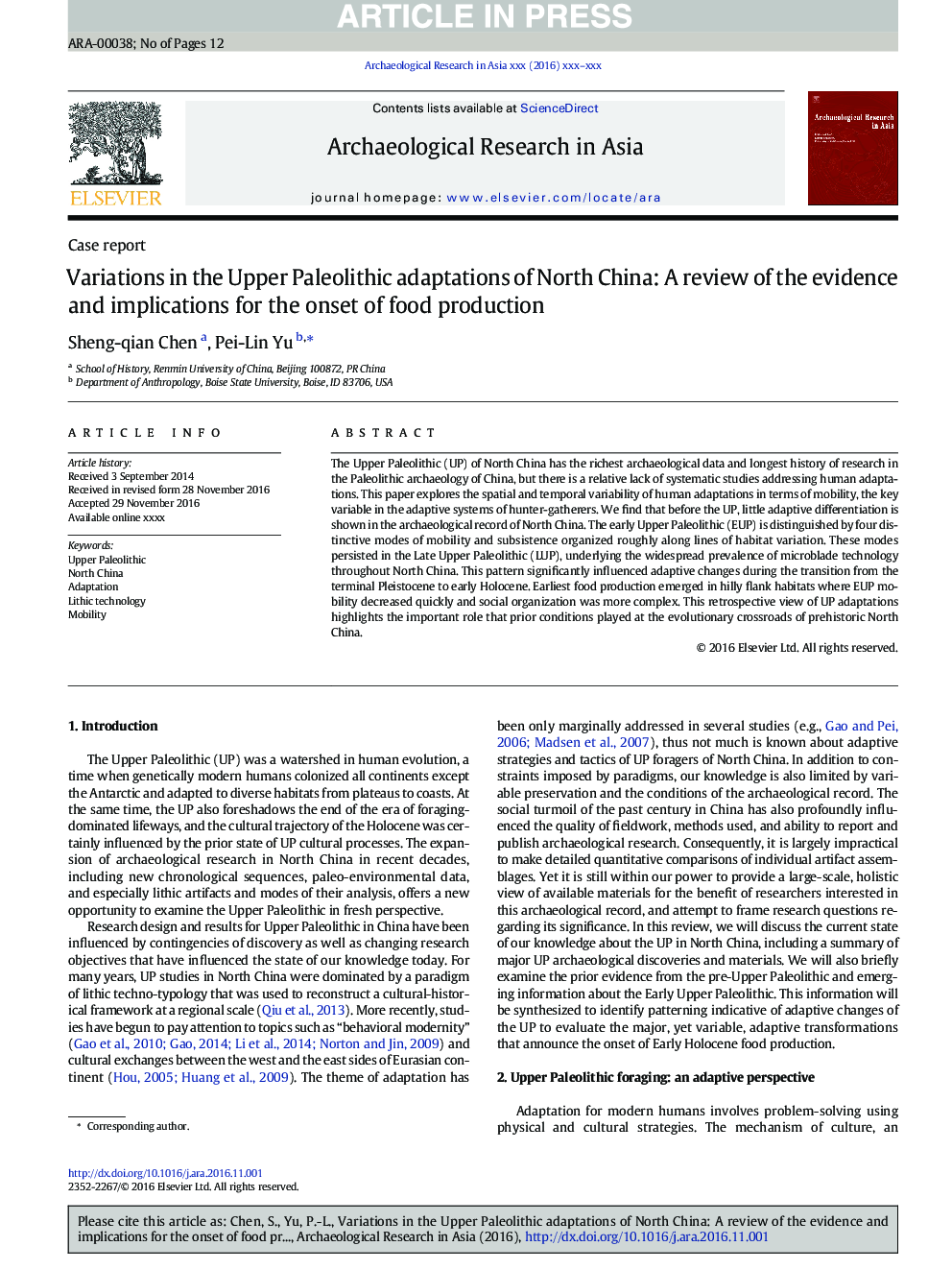| کد مقاله | کد نشریه | سال انتشار | مقاله انگلیسی | نسخه تمام متن |
|---|---|---|---|---|
| 5111888 | 1483763 | 2017 | 12 صفحه PDF | دانلود رایگان |
عنوان انگلیسی مقاله ISI
Variations in the Upper Paleolithic adaptations of North China: A review of the evidence and implications for the onset of food production
ترجمه فارسی عنوان
تغییرات در سازگاری پالئولیتی بالا در شمال چین: بررسی شواهد و پیامدهای شروع تولید مواد غذایی
دانلود مقاله + سفارش ترجمه
دانلود مقاله ISI انگلیسی
رایگان برای ایرانیان
کلمات کلیدی
پالئولیت بالا شمال چین، انطباق، تکنولوژی لیت، تحرک،
موضوعات مرتبط
علوم انسانی و اجتماعی
علوم انسانی و هنر
تاریخ
چکیده انگلیسی
The Upper Paleolithic (UP) of North China has the richest archaeological data and longest history of research in the Paleolithic archaeology of China, but there is a relative lack of systematic studies addressing human adaptations. This paper explores the spatial and temporal variability of human adaptations in terms of mobility, the key variable in the adaptive systems of hunter-gatherers. We find that before the UP, little adaptive differentiation is shown in the archaeological record of North China. The early Upper Paleolithic (EUP) is distinguished by four distinctive modes of mobility and subsistence organized roughly along lines of habitat variation. These modes persisted in the Late Upper Paleolithic (LUP), underlying the widespread prevalence of microblade technology throughout North China. This pattern significantly influenced adaptive changes during the transition from the terminal Pleistocene to early Holocene. Earliest food production emerged in hilly flank habitats where EUP mobility decreased quickly and social organization was more complex. This retrospective view of UP adaptations highlights the important role that prior conditions played at the evolutionary crossroads of prehistoric North China.
ناشر
Database: Elsevier - ScienceDirect (ساینس دایرکت)
Journal: Archaeological Research in Asia - Volume 9, March 2017, Pages 1-12
Journal: Archaeological Research in Asia - Volume 9, March 2017, Pages 1-12
نویسندگان
Sheng-qian Chen, Pei-Lin Yu,
